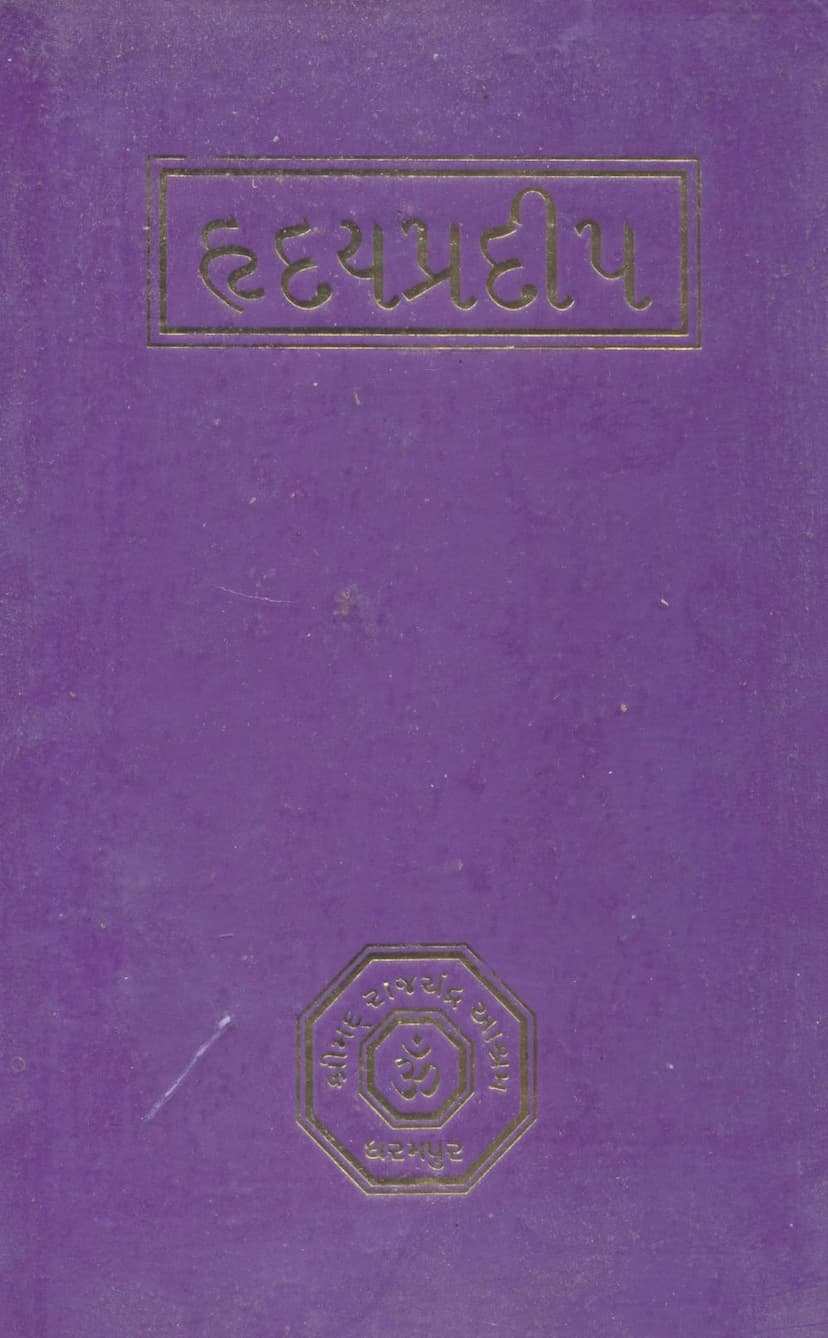Hriday Pradip
Added to library: September 1, 2025

Summary
The provided text is an excerpt from the Jain text Hriday Pradip (The Lamp of the Heart), authored by Chirantanacharya. Published by Shrimad Rajchandra Ashram, Dharampur, this work is presented as a spiritual guide, particularly relevant during the Paryushan festival.
The book is a collection of 36 verses (Shattriśika) that aim to illuminate the path to self-realization and liberation. The introduction highlights the importance of contemplation, detachment from worldly pleasures (Vairagya), and the calming of passions (Upasham) as the main supports for gaining knowledge, as emphasized by Paramkrupāludev Shrimad Rajchandra.
Key Themes and Teachings:
The verses in Hriday Pradip focus on several core Jain principles:
- The Nature of the Soul and Experience: The text begins by defining "experience" (Anubhav) as the inner realization that distinguishes the soul from non-living objects and reveals past actions. It emphasizes the importance of seeking and cultivating this self-experience.
- Knowledge and Action: It differentiates between those who only know (theorists), those who can only act (ritualists), and the rare few who possess both right knowledge and right conduct, highlighting the latter as the path to liberation.
- Detachment (Vairagya): The book elaborates on different types of detachment – born from suffering, delusion, or knowledge – emphasizing that detachment born from true knowledge is the most potent for spiritual progress.
- The Body as a Vehicle: The body is described as a composite of impure elements (worms, flesh, bones, waste), a source of suffering, and a cage for the soul. It serves as a means for sensory gratification for worldly beings but as a tool for knowledge acquisition for spiritual seekers.
- The Perils of Attachment: The text warns against attachment to wealth, women, and sensory pleasures, viewing them as potentially harmful and ultimately transient. It stresses that true happiness lies in self-experience and inner peace.
- The Mind as the Battlefield: The mind is identified as the primary instrument of both bondage and liberation. Controlling the mind (Manajaya) is presented as a greater achievement than conquering the three worlds. True yoga is seen as the cessation of mental activity, true knowledge as the reflection on reality, and true happiness as that found in self-absorption.
- The Folly of Worldly Pursuits: The verses critique the futile efforts of individuals to gain worldly happiness, highlighting that wealth is unstable, sensory pleasures are artificial and momentary, and even great worldly achievements like kingdoms or spiritual powers (Siddhis) become insignificant when compared to inner peace and self-realization.
- The Importance of True Renunciation: The text distinguishes between outward displays of renunciation and genuine inner detachment, warning against hypocrisy and the pursuit of external approval.
- The Path to Peace: The verses advocate for inner peace, contentment, and detachment from worldly opinions and outcomes. True happiness is found in the self, not in external validation or possessions.
- The Supremacy of Self-Realization: The ultimate goal is presented as the attainment of self-knowledge and absorption in the self, which leads to lasting bliss and liberation, rendering all other worldly desires and pursuits meaningless.
- The Role of the Guru: The guidance of a true Guru is emphasized as essential for understanding reality and progressing on the spiritual path.
Overall Message:
"Hriday Pradip" serves as a spiritual manual, urging individuals to turn inward, cultivate self-awareness, detachment, and control over their minds. It emphasizes that true and lasting happiness is not found in external acquisitions or sensory pleasures but in the realization of the soul's true nature through diligent spiritual practice and the guidance of a true Guru. The text aims to dispel ignorance and delusion, guiding the seeker towards the ultimate goal of liberation.